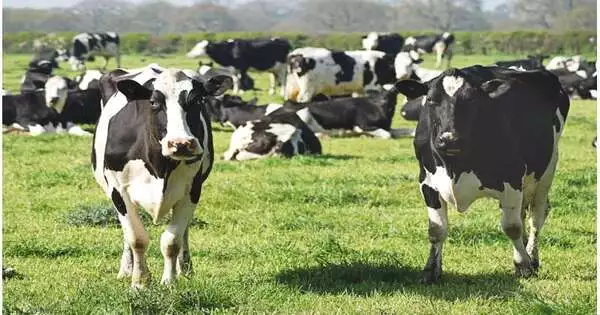For the first time, researchers have shown that antibiotic use and antimicrobial resistance (AMR) in both humans and animals are globally related.
The results, which were published in The Lancet Planetary Health, show that using antibiotics in both humans and animals is linked to both AMR in humans and AMR in animals.
The study emphasizes the urgent need for an integrated, cross-domain approach to combat AMR, focusing on social development, poverty reduction, and enforcing stricter regulations on antibiotic use.
“A robust, cross-disciplinary, and cross-species strategy to AMR surveillance and management that is not restricted to a human-centered perspective should be embraced by decisionmakers and local governments for better planetary health.”
Kasim Allel, lead author and Associate Research Fellow in Infectious Disease Epidemiology.
AMR is a “wicked problem,” according to Kasim Allel, lead author and associate research fellow in infectious disease epidemiology at the London School of Hygiene and Tropical Medicine (LSHTM), as competing priorities exist among a complex web of stakeholders.
“For better planetary health, decision-makers and local governments should embrace a robust, cross-disciplinary, and species-based approach for AMR surveillance and control that is not restricted to a human-centered perspective.”.
AMR poses a serious threat to global health, and in 2019, 1 in every 27 deaths were attributable to resistant bacteria. AMR is being spread primarily as a result of improper use of antibiotics, which include antibiotics, antivirals, and antifungals. Additionally, complex and interconnected socioeconomic and environmental factors, as well as rising consumer demand for animal-based foods and goods, have a significant impact.
An international team of researchers, including those from LSHTM, looked into connections between antibiotic use worldwide and AMR rates in people and animals used for food in the years leading up to 2018. The impact of socioeconomic, health, and environmental risk factors was also taken into account by the authors.
As anticipated, overall, higher rates of antibiotic consumption in animals are linked to an increase in the rate of AMR in animals used for food production, and higher rates of antibiotic consumption in humans are linked to an increase in the risk of AMR in humans.
The study, however, also made the novel discovery that there is a global bidirectional relationship between people and animals. In other words, while increased human antibiotic consumption increases the risk of AMR in humans, increased animal antibiotic consumption increases the risk of AMR in animals (which is defined as a critical priority by the World Health Organization).
Low- and middle-income nations, particularly those in Asia (such as Bangladesh, China, and India), had the highest rates of AMR in animals used for food production despite having low levels of antibiotic consumption. This finding suggests that antibiotic use may be a secondary risk factor for the spread of AMR in some parts of the world.
Socioeconomic factors like income inequality, the number of people dying from heart disease or unhygienic practices, or income disparities all contributed to an increase in AMR in humans.
These results highlight that factors that typically reflect lower socioeconomic status are linked to an increased risk of AMR in humans, which is consistent with earlier research. The authors contend that this further emphasizes the significance of effective governance and anti-corruption within a “One Health” context, which emphasizes the interdependency between animals, humans, and the environment.
The group comes to the conclusion that lowering antibiotic usage alone won’t be sufficient to stop AMR from spreading around the world. Instead, they claim that integrated control strategies aimed at reducing poverty and promoting social development will be necessary to stop the spread of resistance between humans and animals.
They also stress how crucial it is to increase surveillance efforts, particularly in low- and middle-income nations, and to make sure that livestock surveillance, particularly for AMR, mirrors human surveillance.
The Faculty of Infectious and Tropical Diseases at LSHTM’s Laith Yakob, a senior author and co-director of the Taught Program, stated that the analysis’s discovery of a bidirectional relationship between antibiotic consumption and resistance in humans and livestock presents brand-new opportunities for resistance management. As an illustration, it draws attention to the possibility of interventions that focus on a single One-Health component but have systemic effects.
“Tackling what has quickly grown into one of the biggest threats to global health will require designing interventions around this comprehensive picture of resistance. In the future, we advise more stringent country policies and rules regarding the prescription and use of antibiotics in both humans and animals, as well as better governance, accountability, and transparency, particularly in nations with the highest disease burdens.”.
More information: Global antimicrobial-resistance drivers: an ecological country-level study at the human–animal interface, The Lancet Planetary Health (2023). www.thelancet.com/journals/lan … (23)00026-8/fulltext





